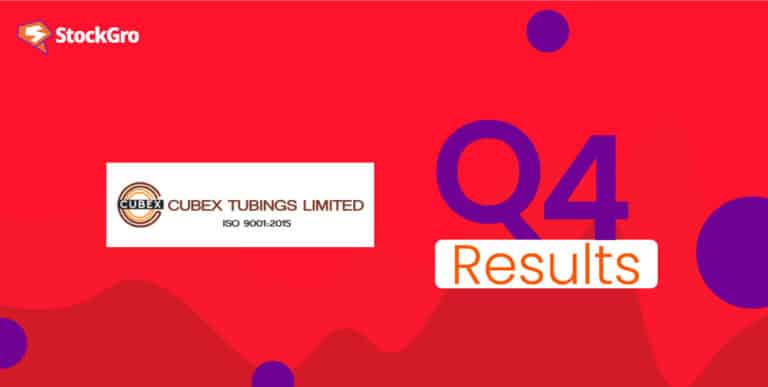
India’s logistics and freight delivery companies are the backbone of the country’s economic growth. These companies make a significant contribution to the country’s growth by ensuring the smooth movement of goods from point A to point B.
Besides being a major employer, the industry is also growing at a healthy rate, driven mostly by large companies like Delhivery and Blue Dart Express.
In this article, we’re going to talk about both these companies, understand what their growth drivers are, their recent financial statements, and our opinion on the future outlook of both these stocks.
Blue Dart Express: Company overview
Founded in 1983, Blue Dart is a major player in Indian logistics, and boasts an extensive network of connections across the country. It currently has over 55,400 locations and coverage in 13,800 pincodes, and has an ongoing partnership with DHL Express to expand their operations globally. Today, they operate in 220+ countries and territories around the world.
The company offers standard domestic and international deliveries, along with faster options like overnight and same-day delivery. They also partner with businesses looking for bulk delivery contracts. Blue Dart is also engaged in providing cargo services by their fleet of aeroplanes and a large ground network.
Blue Dart has warehouses in 85 locations around India, including 7 major metros of Ahmedabad, Bangalore, Chennai, Delhi, Mumbai, Kolkata and Hyderabad.
Management says that their competitive advantage lies in:
- Their vast dometic network
- A wide spectrum of customised solutions for customers, boasting a net service level of 99.96%
- Their vast employee network with 11,000+ people employed
CTA: Zepto delivery
Financial Overview
Here are some key financials for Blue Dart Express for your quick understanding. Please note that figures are as per latest company-reported filings:
All numbers in INR cr:
| Mar-22 | Mar-23 | Mar-24 | |
| Total Income | 4,410 | 5,172 | 5,268 |
| Operating Profit | 1,000 | 938 | 853 |
| Operating Profit Margin % | 23% | 18% | 16% |
| Net Income | 382 | 371 | 301 |
As you can make out, while revenues for Blue Dart are increasing year on year, they are not able to translate those extra profits into their bottom line as effectively. Since their expenses as a percentage of profits are getting higher every year, their operating profit margins are decreasing, and so is their net income every year.
This might be due to operational inefficiencies or a rise in their input costs like fuel or employee benefits like salaries.
Delhivery: Company overview
Delhivery is India’s largest fully integrated logistics provider. Founded in 2011, the company has fulfilled more than 2 billion orders since, and has a network that services every state in India. They service 18,540 pin codes, 24 automated sort centres, 94 gateways, 2880 direct delivery centres, and a team of over 57,000 people.
Delhivery is also a partner to several e-commerce companies and other businesses. In fact, this segment of their business is their biggest revenue driver. They also offer other services like express parcel with same-day and next-day delivery, truckload freight, cross-border services, and other supply chain services.
CTA: E-commerce industry in India
Financial overview
All numbers in INR cr:
| Mar-22 | Mar-23 | Mar-24 | |
| Total Income | 6,882 | 7,225 | 8,142 |
| Operating Profit | -475 | -452 | 127 |
| Operating Profit Margin % | -7% | -6% | 2% |
| Net Income | -1,011 | -1,099 | -249 |
Just like Blue Dart, Delhivery is also making growth in their top-line numbers every year but they are not able to translate them into bottom line profits. In fact, Delhivery has it worse than Blue Dart because they are losing money operationally, since their operational expenses are greater than their revenues. While their margins are slowly moving in the right direction, they are still negative, along with their net income.
Some other key highlights for Delhivery:
- Express parcel shipment volumes for the company have been increasing consistently from 148mn in FY19 to more than 663mn in FY23
- The contribution of their top five customers to their revenue has also been decreasing from 48.8% in FY19 to 39.1% in FY23. This is a positive metric because it signals that they are lowering their switching costs in terms of demand, and de-risking their business overall
Logistics industry trends
Here is a rough breakdown of expert-led opinions of the biggest risks in the logistics industry in India in the next few years:
- Rising fuel costs: Fossil fuel availability and prices are inversely proportional, which affects business operations for companies primarily engaged in transport. Since fuel makes for a significant portion of the company’s input costs, rising costs can significantly impact their bottom line.
- Supply chain management: Many companies in the industry contract with large, complex networks of asset-based third party providers to provide freight transportation services to their customers. Companies need to manage these relationships with service providers well to ensure that their financial performance does not have material adverse effects on their own operations.
- Technological advancements: As companies increasingly look to automate processes and move to the cloud to drive greater efficiency, dependency on physical movement of documents has decreased. In a way, the increased use and demand for high-end and sophisticated technology is an opportunity for these companies to reduce their carbon footprint and make deliveries more sustainable.
Conclusion
As the population of India increases consistently and the economy continues to grow, freight and logistics will be the driving force of growth. While investing in these companies in the long-term might be a good idea, the actual investment itself requires a lot of independent research from your end. It is important to stay informed of current developments in the industry and these companies to make informed investment decisions.

